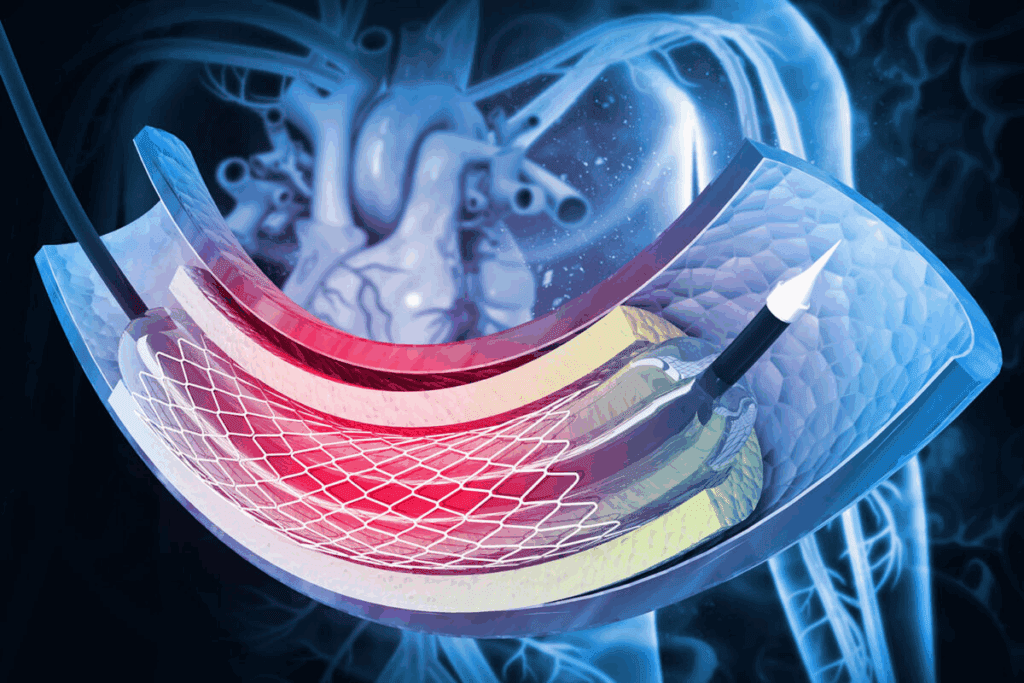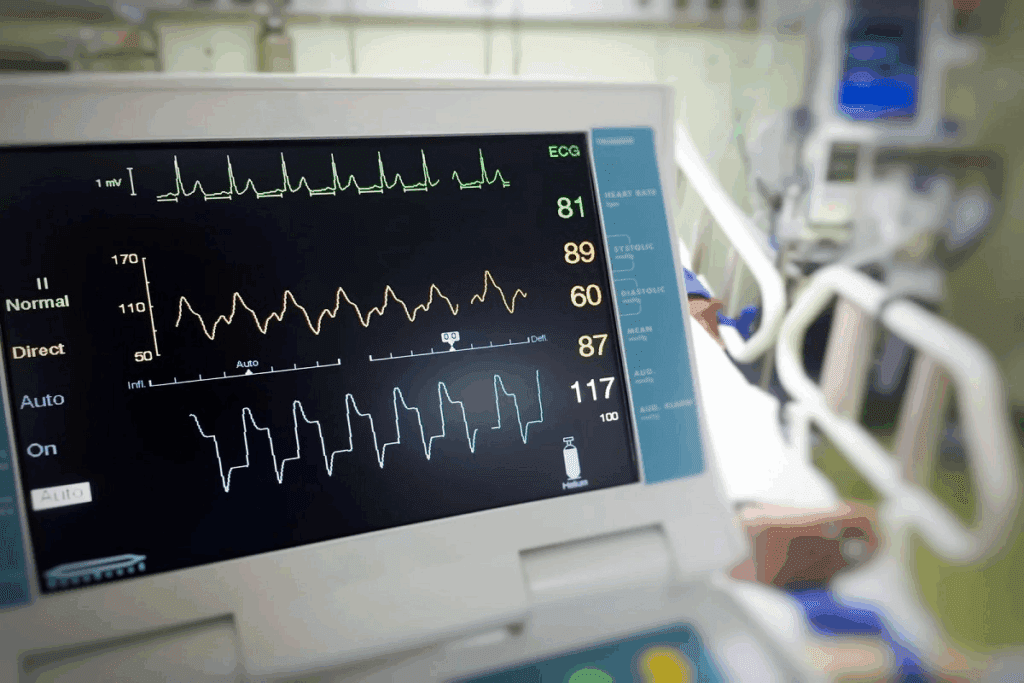
Did you know your feet might show the first signs of heart trouble? At Liv Hospital, we focus on keeping you healthy with top-notch cardiology and vascular care. Spotting foot-related signs early can save your life, and we’re here to help you.
Changes in your lower limbs can hint at heart and vessel issues. Medical Expert, hair loss, or slow-healing wounds might mean you’re at risk for a heart attack. It’s important to know these signs to catch problems early.

Our feet and heart health are closely connected. Understanding this link is key for spotting heart problems early. Medical Expert.
Poor circulation can harm our feet. If the heart doesn’t pump well, blood flow to our extremities drops. This can cause our feet to feel cold, change color, or hurt.
Good circulation is vital for our feet. It brings oxygen and nutrients and takes away waste. When circulation is bad, we might feel pain or discomfort in our feet. Spotting these signs early can help catch heart disease before it’s too late.
Feet are often the first to show signs of heart disease. They are far from the heart, so they get less blood flow. This can cause pain, swelling, or skin changes.
Feet can be a clue to our heart health. Hair loss, slow-healing wounds, or color changes in the skin can mean circulation or heart problems. Paying attention to these signs can help us keep our heart healthy.

It’s important to know how Peripheral Artery Disease (PAD) and heart attack risk are connected. PAD happens when arteries narrow, cutting off blood flow to the legs. This can cause pain in the legs or feet when you exercise.
PAD affects about 8 to 12 million Americans. But, many cases go unnoticed. It’s more common after 50. Smoking, diabetes, high blood pressure, and high cholesterol raise your risk.
The Impact of PAD on Heart Health
PAD is more than just a leg problem. It shows a bigger issue with artery narrowing, which can lead to heart attacks. The same things that narrow leg arteries can narrow heart arteries too. This makes people with PAD more likely to have heart attacks or strokes.
Early detection and management of PAD are critical in reducing heart attack risk. Making lifestyle changes, managing risk factors, and sometimes medical treatments can help. These steps improve blood flow and lower the chance of heart problems.
By understanding PAD and its heart health implications, we can act early. This reduces heart attack risk and improves heart health overall.
Knowing the warning signs of a heart attack in your feet is key. Your feet can show early signs of heart problems. This gives you a chance to act early and prevent a big heart issue.
Feet symptoms are not just random. They often point to serious vascular problems. For example, persistent swelling, hair loss or skin changes, pain or cramps while walking, and slow-healing ulcers can signal PAD or heart disease.
Medical Expert, a cardiologist, says, “The feet are like the canary in the coal mine for heart health. Watching for changes in the feet can tell us a lot about our heart health.”
Many people notice foot symptoms before a heart attack. About 40% of heart attack victims had foot symptoms before their attack.
These stats show how important it is to watch your foot health. By noticing these signs and getting help early, you can avoid serious heart problems.
Persistent swelling and edema in the feet can signal heart issues that need quick attention. When the heart pumps poorly, fluid builds up in the legs, causing swelling.
Foot swelling, or edema, is linked to heart failure or kidney disease. “Bilateral swelling can occur when circulation slows or venous pressure rises, indicating heart failure or kidney disease,” showing the link between swelling and heart health.
The reasons for foot swelling in heart conditions are varied:
Pitting edema is swelling that leaves an indentation when pressed. To check for it, press your finger on the swollen area for a few seconds. If the indentation stays after you lift your finger, it’s pitting edema.
Key characteristics of pitting edema include:
Medical experts say, “Pitting edema is a significant sign that warrants further investigation into possible heart conditions.”
Our feet can show signs of heart health problems. Hair loss and skin changes are common signs. These often happen because of less blood flow, a sign of heart disease.
Less blood to the feet can change the skin. It might get thinner, paler, or even blue because of less oxygen. Reduced circulation also makes the skin feel cooler.
Hair loss on the feet or toes is another sign of poor circulation. Hair needs enough blood to grow, and without it, hair falls out.
Nail changes can also hint at heart issues. Nails may become thicker or thinner, and their growth can slow down. Sometimes, nails get brittle or have ridges.
| Nail Change | Possible Cause |
| Thickening of Nails | Poor Circulation |
| Brittleness | Reduced Blood Flow |
| Ridging | Nutritional Deficiencies, Poor Circulation |
These changes can mean there’s a heart problem. So, it’s important to watch your nail health for heart health.
Pain or cramping while walking can signal a serious issue. This symptom, known as intermittent claudication, is linked to Peripheral Artery Disease (PAD). We’ll look into what claudication is and how to tell muscle cramps from vascular pain.
Claudication causes pain or cramping in legs or arms during exercise, easing with rest. It’s often due to less blood flow to the muscles.
“Claudication is a symptom, not a disease itself, and it indicates a need to investigate the underlying cause,”
a vascular specialist notes. The pain feels like aching, cramping, or tiredness in muscles.
Not all leg pain during walking is claudication. Muscle cramps can happen from dehydration or overuse. But, vascular pain, like in claudication, is due to less blood flow. To tell them apart, consider these points:
Seeing a healthcare professional for a proper diagnosis is key. They might suggest tests like the ankle-brachial index (ABI) to check blood flow to the limbs.
Foot ulcers that don’t heal quickly are more than just a foot problem. They can show bigger issues with heart health. These slow-healing wounds and ulcers often point to poor circulation, a common problem in heart disease patients.
Poor circulation is a big reason why wounds take longer to heal. When blood flow to the feet is low, wounds don’t get the oxygen and nutrients they need. This slows down healing, says Medical Expert, a heart health expert.
Medical Expert, “Poor circulation can turn a small wound into a big problem.” Reduced blood flow makes it tough for the body to fix wounds. This is why it’s hard for wounds to heal when blood flow is low.
The link between poor circulation and heart health is clear. Conditions like Peripheral Artery Disease (PAD) reduce blood flow to the legs. “PAD is a sign of widespread atherosclerosis, which raises the risk of heart attack and stroke,” Medical Expert. This shows why fixing circulatory problems is key to avoiding bigger heart issues.
How do you know if a wound is serious? Look for ulcers or wounds that don’t heal fast. Signs of infection, like redness, swelling, or pus, are warning signs. Also, deep or large wounds, or those that show tendons or bones, need quick medical help.
Watching how wounds heal is important. If a wound doesn’t start to heal in a few weeks, see a doctor. They can check the wound and treat it, possibly fixing circulatory problems.
“The presence of non-healing ulcers on the toes, feet, or ankles is a serious warning sign of severe PAD and possible gangrene, necessitating prompt medical evaluation.”
Spotting and treating circulatory issues early can help heart disease patients a lot. By noticing slow-healing wounds and ulcers, people can get medical help fast. This can stop more serious problems from happening.
Toe pain can be a surprising sign of heart health problems. It often comes from vascular issues. When we feel pain in our toes, we might think of injuries or bad shoes. But, toe pain can also mean bigger health issues, like heart problems and circulation issues.
Vascular problems can show up in our toes in different ways. This is often because of less blood flow. Poor circulation can cause pain, discomfort, and even ulcers or gangrene. When blood vessels are narrowed or blocked, our toes are more at risk because they are far from the heart.
Some common vascular problems that cause toe pain include:
Changes in our toenails can be signs of heart health issues. Splinter hemorrhages, small, vertical lines under the nail, can mean vascular problems or endocarditis, an infection of the heart valves. Also, clubbed toenails, where the nails become enlarged and curved, can show chronic oxygen deprivation. This is often linked to heart or lung conditions.
Spotting these signs early is key. If you see any odd changes in your toes or toenails, see a doctor. They can figure out if these symptoms are heart-related or not.
Knowing the difference between left and right foot symptoms can tell us a lot about our heart health. It’s important to remember that symptoms might not show up the same in both feet when it comes to heart issues.
The left foot might show different signs because it’s closer to the heart. Reduced blood flow or circulatory issues can be more noticeable in the left foot. This could mean there’s a problem with the heart.
Doctors say, “The presence of asymmetric symptoms in the feet can be a critical indicator of underlying vascular disease.”
Systemic cardiac output issues can really affect foot health. When the heart isn’t pumping well, it can cause peripheral artery disease (PAD). This disease affects blood flow to the extremities.
Signs of systemic cardiac output issues affecting foot health include:
Understanding these differences and their implications is key to early detection and management of heart-related conditions. If you notice any unusual or asymmetric symptoms in your feet, it’s important to see a healthcare professional.
Foot symptoms can be tricky to figure out if they’re linked to heart health. Heart-related foot issues often show symptoms that look like other problems. So, getting the right diagnosis is key.
Many conditions can be mistaken for heart-related foot problems. These include:
It’s important to know the differences between these conditions and heart-related foot problems. For example, musculoskeletal issues usually affect a specific area and are linked to certain activities. On the other hand, heart-related foot problems often have more widespread symptoms.
To accurately diagnose heart-related foot problems, your doctor may suggest several tests. These can include:
These tests help doctors tell heart-related foot problems apart from other conditions. This ensures the right treatment is given.
Knowing when to get medical help is key to avoiding serious heart problems. Your feet can show early signs of heart issues. Being alert to these signs can save your life.
Sudden changes in foot symptoms are a big warning. If you notice any of these, get medical help right away:
When you see your doctor, tell them all about your symptoms. Be ready to share:
Sharing this info helps your doctor diagnose and treat you better.
It’s important to know the signs of a heart attack in your feet. We talked about how foot symptoms like swelling, hair loss, pain, and slow-healing wounds can mean heart problems.
Keeping your heart healthy means watching for these signs and getting help fast. Knowing how foot issues relate to heart disease helps you avoid serious problems like heart attacks and strokes.
Spotting heart issues early is key to staying healthy. We urge you to watch your foot health closely. If you notice anything odd, see a doctor right away. This can help lower your risk of heart problems and keep you feeling good.
Heart attack signs in your feet include swelling, hair loss, and slow-healing wounds. Pain or cramping while walking is also a sign. These symptoms can point to heart problems like Peripheral Artery Disease (PAD).
Yes, toe pain can be a heart health issue, mainly if it’s linked to blood vessel problems. Splinter hemorrhages and clubbed toenails are heart problem warnings.
PAD narrows arteries, cutting off blood to limbs. This makes the heart muscle more vulnerable to damage, raising heart attack risk.
Pitting edema is swelling in the feet and ankles. It’s a heart condition sign, like heart failure, where the heart can’t pump blood well.
Feet show heart disease signs early because poor circulation causes symptoms like coldness and pain. These are early heart disease indicators.
Vascular pain happens with activity and goes away with rest. Muscle cramps can happen anytime. If you have pain or cramping while walking, see a doctor to find out why.
Your doctor might suggest an ankle-brachial index (ABI) test, Doppler ultrasound, or angiography for foot problems linked to the heart.
Seek immediate medical help for severe foot pain, swelling, or discoloration. Also, if a wound won’t heal. These are serious signs.
Yes, left foot symptoms can differ from right foot symptoms. Heart issues can affect foot health differently, with the left foot showing unique signs.
Keep your heart healthy with a good diet, exercise, and managing conditions like high blood pressure and diabetes. Knowing heart attack signs in your feet helps you get medical help quickly.
Government Health Resource. (2025). 4 Signs of Heart Attack in Your Feet. Retrieved from https://www.heart.org/en/health-topics/heart-failure/warning-signs-of-heart-failure
Subscribe to our e-newsletter to stay informed about the latest innovations in the world of health and exclusive offers!
WhatsApp us